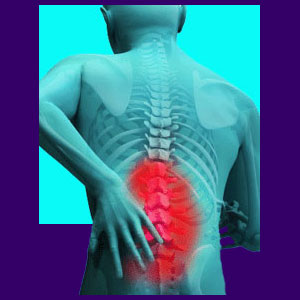
A back muscle spasm is a powerful and uncontrollable tightening of one or more of the muscles in the dorsal region. Spasms can occur in the neck, upper back, middle back, lower back, buttocks or flanks. When these take place in the postural muscles, they are pure torment.
Once affected by back spasms, patients will always desperately fear a recurrence. Among all of my terrible ordeals with back ache, the times when I had postural spasms were by far the most torturous I have ever experienced.
Muscle spasms are virtually always terribly excruciating. The muscles contract violently and feel as if they will crush themselves. Every movement might set off a new series of horrible muscular contractions. Many back pain sufferers have described this type of symptomatic expression as the most painful experience of that person’s life. I can personally agree with this statement 100%.
This essay investigates why muscular spasms are so terribly painful to endure and how they might be resolved.
Immediate First Aid for Back Muscle Spasm
There is no sure way of stopping spasms once they begin. Typically, doctors treat muscle spasms with powerful drugs, either injected or oral. These may or may not be effective. In the worst cases of spasms I endured, even 3 injections of Demerol and anti-spasmodic medications did nothing at all to calm the horrific suffering. Here are some pieces of common sense wisdom which may prove useful if you are dealing with recurrent spasms:
Many spasms occur from spontaneous injury to the back or spine. Some useful home remedies for a new injury are rest and ice. Try to relax and find a comfortable position. Avoid any movement that will set off a new series of muscular contractions.
Apply ice to the area 10- 20 minutes at a time, every 1 to 2 hours. Do not apply ice for longer than 20 minutes. OTC drugs might be needed for symptomatic relief of severe pain.
If spasms are severe or debilitating, immediately seek medical attention and hope that the doctors will be more useful in your case than in most of the patient experiences I have heard over the years. In most cases of emergency room care for spasms, it is drugs, a recommendation to follow up with your own doctor and being sent home still in pain.
Continuing Treatment for Back Muscle Pain
Once the spasm has ended, the back pain might still be there. Now is the time to work on a treatment plan to rehabilitate the muscles.
Take it easy, but move around. Prolonged bed rest can make the muscles weak and stiff, often perpetuating the painful condition.
Increase the circulation of blood to the area. Heat or hydrotherapy are gentle and excellent means for increasing blood flow. Oxygen deprivation back pain can be a contributor to spasms.
Try to avoid pain management drugs if possible. Substitute natural pain relief if available. Acupuncture is a good choice.
Once the pain has improved, use stretching and exercise to rebuild the muscular strength and range of motion. Start slow and consider using a professional physical therapist to assist you with your back pain rehabilitation.
Be careful not to re-injure the same muscles. If necessary and indicated, wear a supportive back brace when doing heavy work.
Tips for Back Muscle Spasm
I clearly remember having muscle contractions that were worse than the fear of death. Anything seemed like a better situation than to be lying in a hospital bed, drugged up to the point of stupor, yet still in indescribable pain. My muscles were in such violent contraction that the doctors were unable to examine me at all for an entire day! This is my most vivid memory of back pain hell.
I understand the misery of muscular back pain. Please, be patient and the back muscle spasms will pass. Keep a positive outlook and realize that the back spasm will stop and the pain will fade. The more you worry and obsess over the symptoms, the longer they will likely last.
Once you feel better, work on becoming as healthy as possible to prevent further muscle injuries or recurrences of discomfort. If you are the victim of unexplained chronic symptoms, knowledge therapy might help to identify nonstructural causative factors behind your painful symptoms. Remember, chronic muscle ache is not generally caused by structural spinal conditions.





